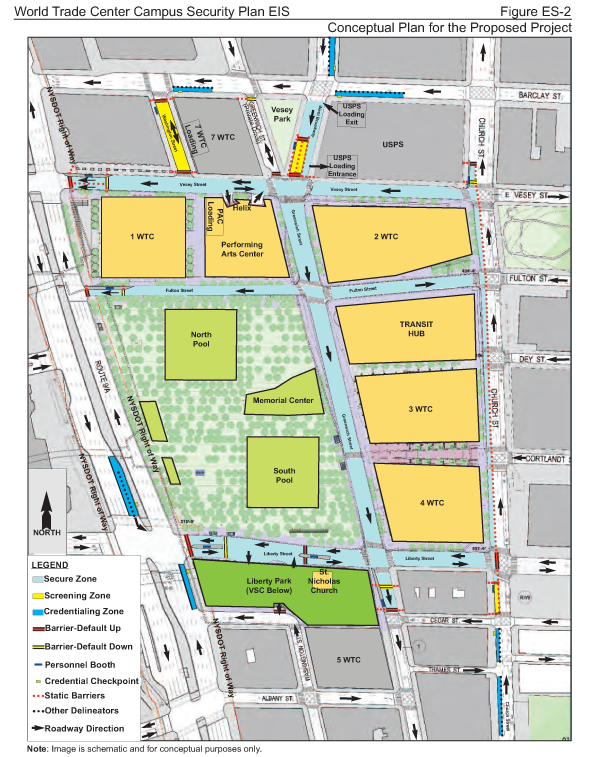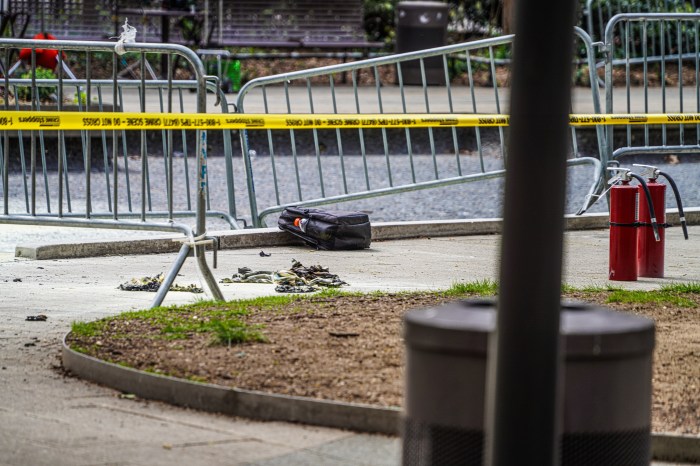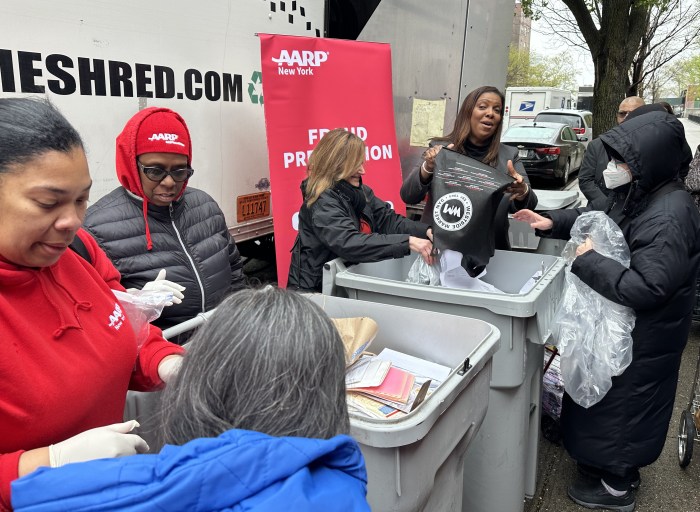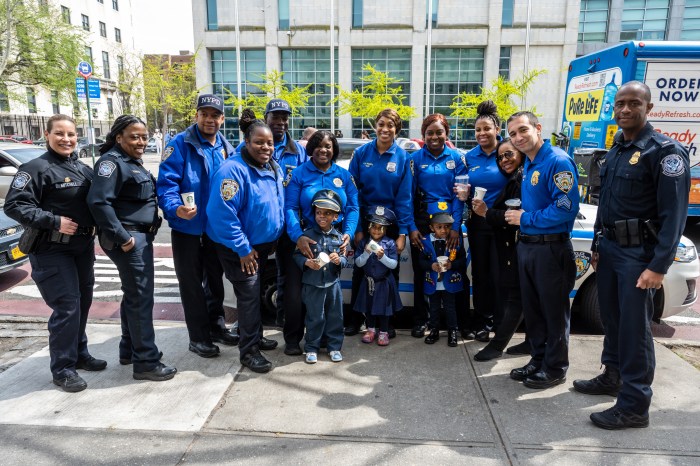
BY DUSICA SUE MALESEVIC | The World Trade Center Performing Arts Center — an important part of the original plan for the site but which has been plagued with delays — still does not have an architect, but is moving forward with a clear vision of what kind of performing arts space it would like to be.
“One upside of the shift in architects is that we really have had time to put together what this building is going to be — what we want it to be,” said Lucy Sexton, associate artistic director.
Architect Frank Gehry’s design for the Performing Arts Center was dropped last September.
Sexton outlined the three goals of the center at Community Board 1’s Planning Committee on Mon., Jan. 12.
“First of all that it should be a theater of the world,” she said.
Sexton explained that the center would not only present art, but would also commission it.
“You don’t build a theater in the middle of the greatest city in the world to import work,” she said. “We took the idea of it being a World Trade Center, not just for the exchange of goods but also a World Trade Center for the exchange of cultures and ideas and a place to gather and come together.”
There will be three theaters with different seat capacity — 550, 350 and 150 — that will be configured in such a way that they can be combined, said Sexton. The center will mount theater, musical theater, dance, music and new opera performances.
Sexton, who said she had “deep roots” in the dance and theater world and also runs the New York Dance and Performance Awards, said that there have been many conversations with artists to discuss needs. It was brought up repeatedly that there wasn’t a venue to perform new or smaller operas, thus its addition to the list.
Sexton said that the PAC, as the arts center is often called, is talking to Pace University, Gibney Dance, Sam Miller of the Lower Manhattan Cultural Council and to the Apollo about co-producing or working together.
“To not give in to this idea that theaters need to be competitive with each other,” she said.
The next goal is that the center is one “that’s alive all day” — open from 8 a.m. to 1 in the morning. The idea that people come in during the daytime, have coffee, meet for lunch, see performances and linger after — or perhaps are visiting the 9/11 Memorial and Museum and decide to stop by the PAC.
“The public space is very important to us. We want it to be a place where the people who work in this neighborhood, the people who live in this neighborhood, will come in, will gather,” she said. “A place that gets a lot of traffic going through it all times of day.”
Lastly, the center would be the “most digitally advanced space in the city, in the country, one of the most digital advanced spaces in the world so that it can respond to the art that’s being made increasingly with digital media,” explained Sexton.
This would also help connect art in New York City with other parts of the world.
“So that if you built it with enough digital infrastructure so that you could actually connect with another theater, you could have performance happening in New York City and in Seoul and in Rio,” she said.
In addition to the global ties, that digital infrastructure will also connect the center to other parts of the city. For instance, streaming a rehearsal or master class so that students in other boroughs or just down the street can watch or be a part of it.
“These are lofty goals, they’re adventurous goals but I think that they are ones that its — if you’re going to build a new theater, it’s what required,” said Sexton, who called the center a “connecting node.”
David Lan, who runs the Young Vic in London, was named the consulting artistic director of the PAC and has been in that position since September of 2013, according to The Guardian.
Both Sexton and Maggie Boepple, the center’s president, touted Lan’s record — a 96 percent capacity for the audience at the Young Vic, a theater founded to stage innovative plays at affordable prices. Boepple called it “astonishing” that Lan has maintained an almost packed house for the past five years. The makeup of the audience is also diverse.
Boepple said that it is important that the PAC will be a “cultural, community center for this area” and to have an audience that represents the community.
“It’s a challenge, no doubt, but it is definitely one of our goals that it should a place where lots of different people come to see theater, not just rich people,” said Sexton.
Boepple said that the center could be open by late 2018 or 2019, depending on the Port Authority, which is still completing infrastructure. The site of the PAC is at Vesey and Greenwich Sts., currently the temporary PATH station.
“However, you will see some PAC productions before that because we want to wet everyone’s whistles,” said Boepple, although she doesn’t yet have a venue or timetable for that.
She said that their operations are moving higher in One Liberty Plaza, thanks to a gift from Brookfield Properties — a five-year lease that costs the PAC nothing.
C.B. 1 member Kathleen Gupta asked Boepple what were PAC’s “synergies” with the 9/11 Memorial and Museum and the various family groups.
“I know there’ve been issues in the past about what type of art would be presented so close to Ground Zero,” said Gupta, referring to a dispute a decade ago, which ended up moving the cultural center off the memorial block.

“We are very close to the people in the memorial. We obviously will be very respectful of the family groups. But I think the PAC always was about the future,” said Boepple. “That was the way it was started up, way before we got there. The memorial is about what happened and we’re about the future. We are living, we are breathing, and it’s sort of a slightly different feeling than the memorial and the museum.”

















